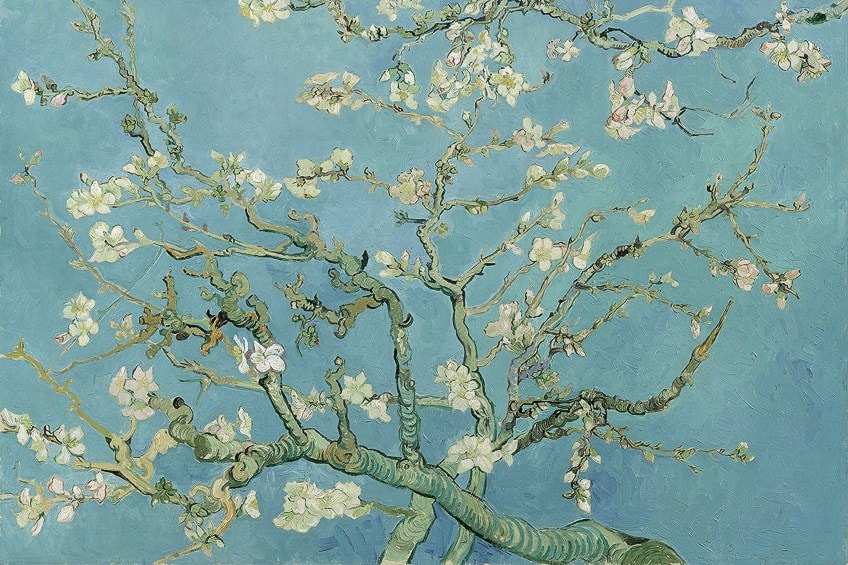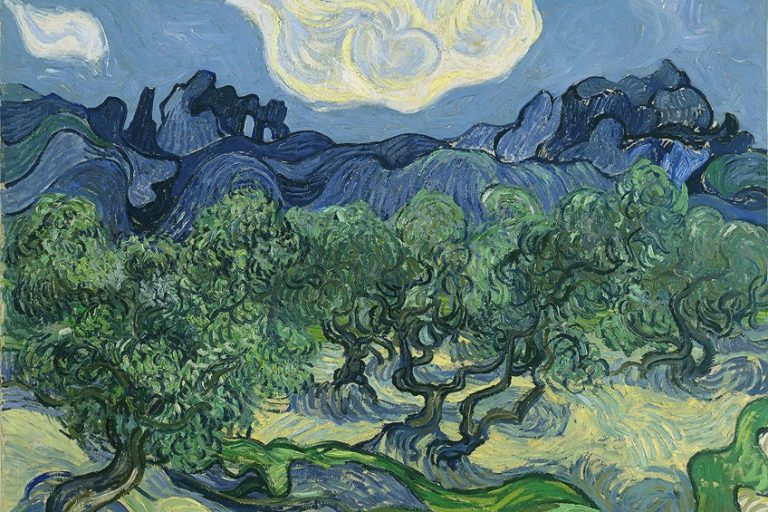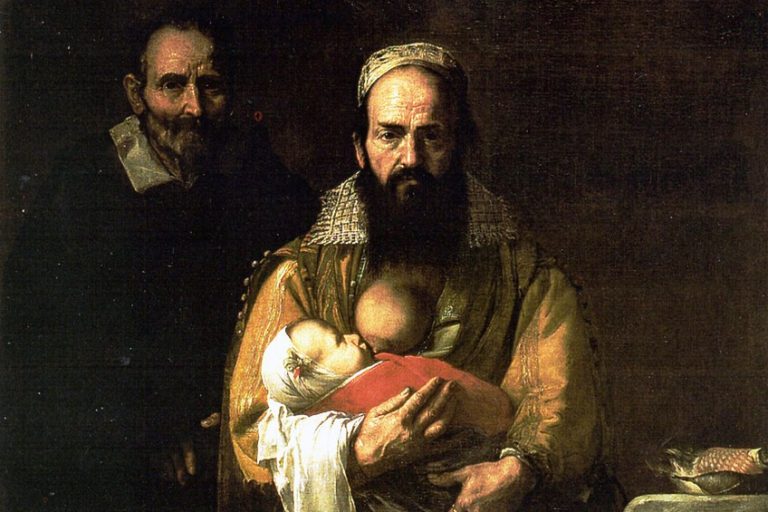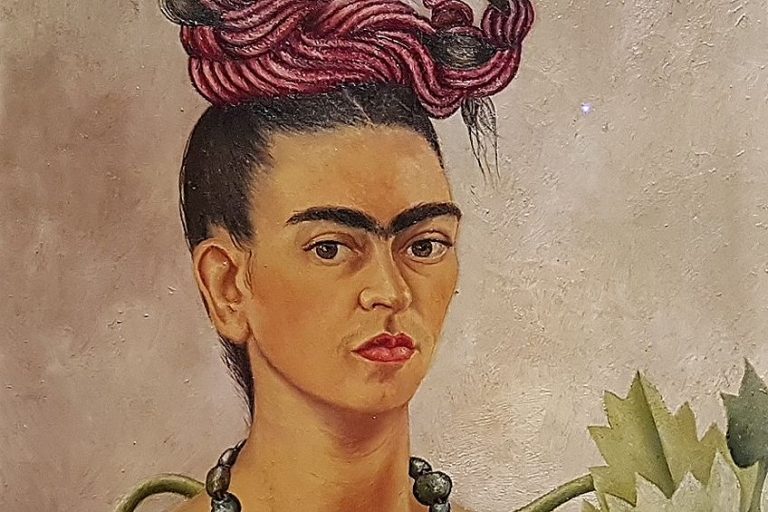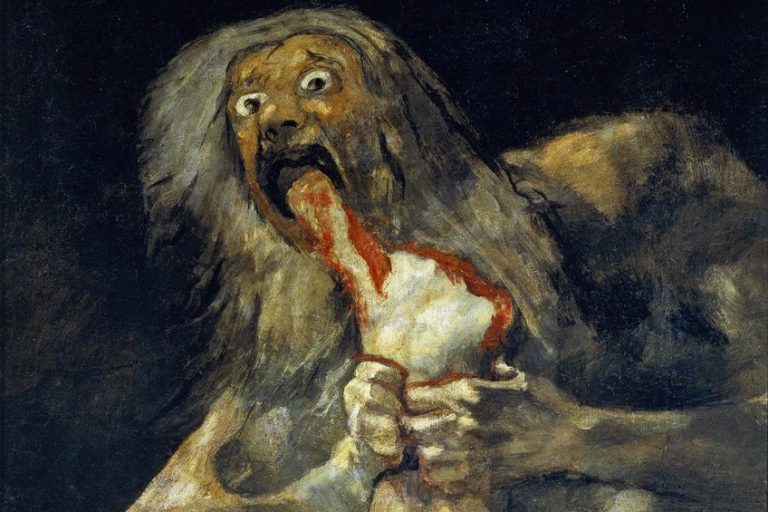‘Almond Blossom’ van Gogh – Analyzing van Gogh’s Blossom Tree Painting
Set against the most beautiful background of blue are blossoming almond flowers. This is an image brought to life in just one of the many Vincent van Gogh flower paintings, specifically his blossom tree painting Almond Blossom from 1890. It was in fact this idea of life that van Gogh explored in this painting, which we will explore in more detail below.
Table of Contents
Artist Abstract: Who Was Vincent van Gogh?
Vincent van Gogh was one of the most famous Post-Impressionists and possibly also the most infamous, many of us know him as the artist who cut off his ear, this was Vincent van Gogh. Born in March 1853 in the town called Zundert, located in the south of the Netherlands. Van Gogh had three sisters and two brothers, and his younger brother Theo became a source of companionship and financial support to him over the years. He started his artistic career around 1880 after having tried various other professions, including being an art dealer. In 1886, he studied at the Antwerp Academy and developed his drawing techniques further.
Throughout Vincent van Gogh’s artistic career, which lasted around 10 years, he was believed to have produced around 900 paintings. In July 1890, he committed suicide, only to die a few hours later.

Almond Blossom by Vincent van Gogh in Context
A painting inspired by new life, the freshness of Spring, and the style of Japanese woodcuts, among others, Almond Blossom (1890) by Vincent van Gogh has been one of his most fruitful paintings of his artistic career even though he never sold it.
In this article, we will look more closely at van Gogh’s famous blossom tree painting from his numerous paintings about the subject. We will provide a contextual analysis and place the painting within the time frame it was made and explore why van Gogh painted it.

We will also explore a formal analysis, discussing the subject matter and stylistic elements van Gogh utilized in terms of color, brushstrokes, line, perspective, and so forth.
| Artist | Vincent van Gogh |
| Date Painted | 1890 |
| Medium | Oil on canvas |
| Genre | Still Life |
| Period / Movement | Post-Impressionism |
| Dimensions | 73.3 x 92.4 centimeters |
| Series / Versions | Part of a series of paintings of almond blossoms |
| Where Is It Housed? | Van Gogh Museum, Amsterdam |
| What It Is Worth | Never sold |
Contextual Analysis: A Brief Socio-Historical Overview
Almond Blossom is part of the van Gogh flower paintings collection. It was painted in 1890 around the time van Gogh lived in the mental hospital Saint-Paul-de-Mausole, which is in Saint-Rémy-de-Provence in France. This is also where van Gogh painted his famous Starry Night (1889) painting.
During van Gogh’s stay at Saint-Paul mental hospital, he produced numerous other paintings focusing on the landscapes around him. He had two rooms during his stay: one bedroom and one painting studio. His bedroom had a view of the French mountain range the Alpilles, which we will frequently see in his paintings.
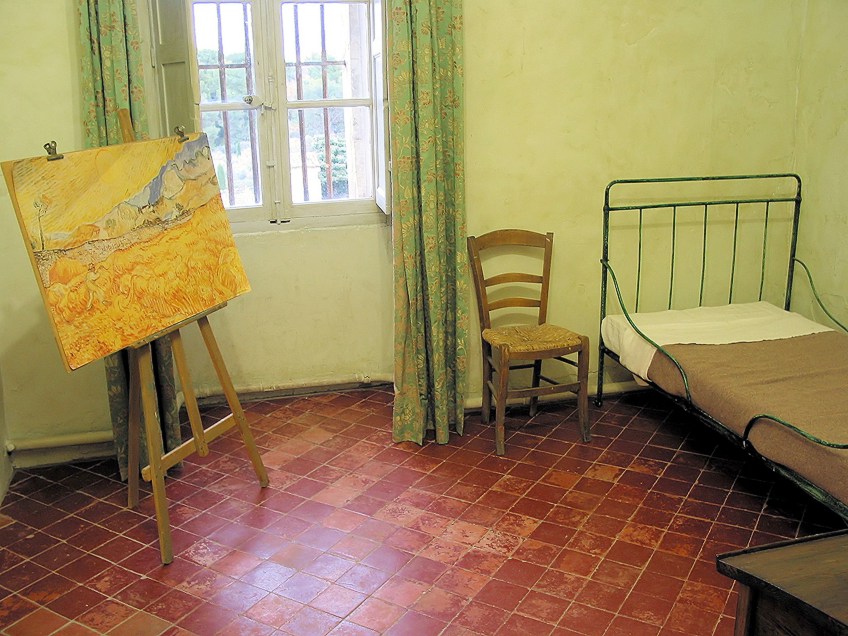
During the 1800s when van Gogh painted, he mostly worked within the Post-Impressionist movement of the time. This style of art developed as a reaction to the previous art movement called Impressionism, which sought to depict the world as it occurred, oftentimes with all the imperfections that would come with it.
This style of painting was often completed “en plein air“, which which means “in the open air” in French.
Artists also depicted more modern subjects and the everyday lifestyle that went against the traditional subject matter from art before it, namely religious and mythological subjects. In other words, the “Impression” of the world was depicted through the artist’s gaze, and they also focused on how light and color interacted in the composition.
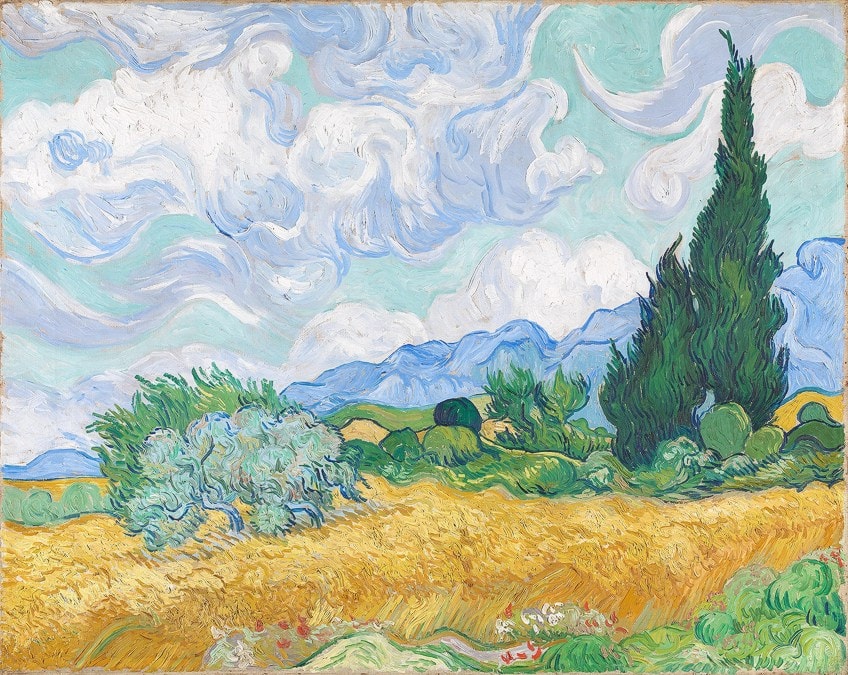
With Post-Impressionism there was a move towards more symbolism in paintings; some artists also focused on more formal elements of painting as well as the symbolic meaning of color. Van Gogh enjoyed the en plein air style and some of his contemporaries like Paul Gauguin focused on deep symbolic meanings.
Celebrating Life: A New Nephew
Vincent van Gogh was not the only child, he had a younger brother named Theo, who was also an art dealer and a large part of Vincent’s life providing him with significant financial support throughout his life. There are over 500 letters of correspondence between the two brothers, which gives us in-depth information about how Vincent felt about his artistic processes as well as life in general.
Theo was also emotional support to Vincent, often giving him guidance.
So, when Vincent heard the news that his brother and wife, Johanna van Gogh-Bonger, was expecting a baby and wanted to name him after Vincent, the artist produced a painting in their honor. His nephew was born in January 1890 and so was van Gogh’s Almond Blossom painting, bearing the imprint of joy and new life.
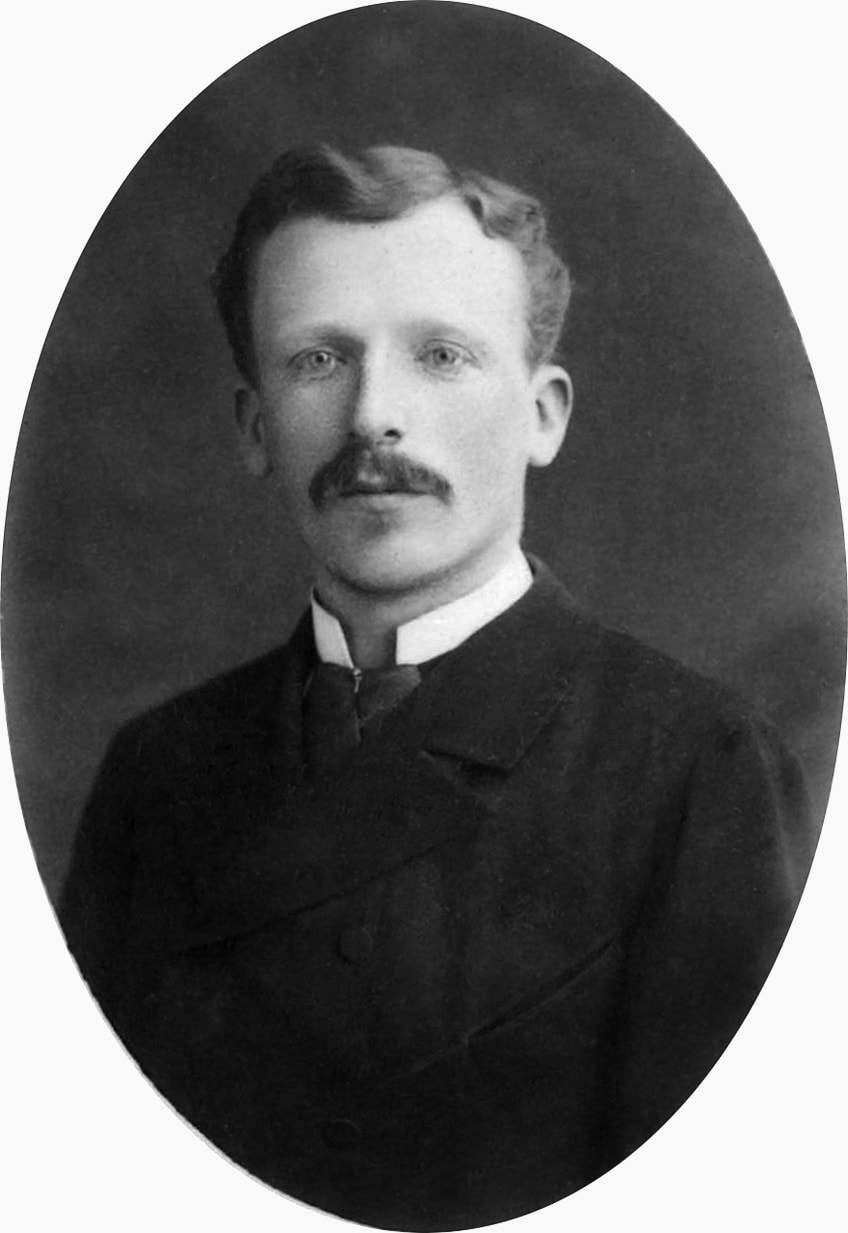
The Imprint of Joy and New Life
In Almond Blossom, van Gogh leverages the idea of joy and new life in different ways because as much as this was in honor of his nephew, also named Vincent, it was at a time when the seasons were changing in France.
The February months in France are the start of Spring and this is also when the Almond flowers bloom on the Almond trees. Van Gogh was charmed by all the beautiful blooming Almond flowers, undoubtedly the Almond blossom meaning lies in new life, brought on by Spring and a nephew. When Vincent heard the news that he was going to be an uncle he shared in one of his letters to his mother:
“I started right away to make a painting for him, to hang in their bedroom. Large branches of white almond blossom against a blue sky,” (Letter 855, 19 February 1890).
Formal Analysis: A Brief Compositional Overview
Below we will discuss a formal analysis of van Gogh’s Almond Blossom painting starting with the subject matter. We will also look at how this blossom tree painting emits that classical van Gogh aesthetic appeal through the artist’s utilization of stylistic elements and influences.
Subject Matter
In Almond Blossom van Gogh painted a blue monochromatic background with part of an Almond blossom tree’s branches filling the foreground. There are numerous white Almond flowers on the branches. We see the larger part of the Almond tree branch starts filling the space from the lower right portion of the composition and seemingly moves upwards branching out to fill the entire space. There is nothing else but the Almond tree and its flowers.
In Almond Blossom, van Gogh depicts a minimalistic painting style with a simple background and foreground subject, there is nonetheless a lot happening in terms of van Gogh’s use of color and line.
Let us look at it in more detail below.
Color and Light
Van Gogh utilized dark outlines along the branches of the blossom tree painting leaving most of the flowers without any outlines, which gives them a softness against the darker lines from the branches. However, we still see darker outlines around some of the almond flowers, there are even some red outlines that van Gogh included, dispersed around the composition.
This brings us to van Gogh’s color palette, it is seemingly minimal, most of what catches our gaze is the blue background and the dappled white dots that make the almond flowers. The bony branches reach into the foreground appearing quite blue-grey and not so much brown. This blends in with the blue background almost highlighting the background as the prominent subject matter.
The colors we see are all muted and gentle in their tones. There is turquoise blue for the background, pale whites, pinks, greens, other shades of blues, and strikingly black with hints of what appear like reds, as mentioned above.
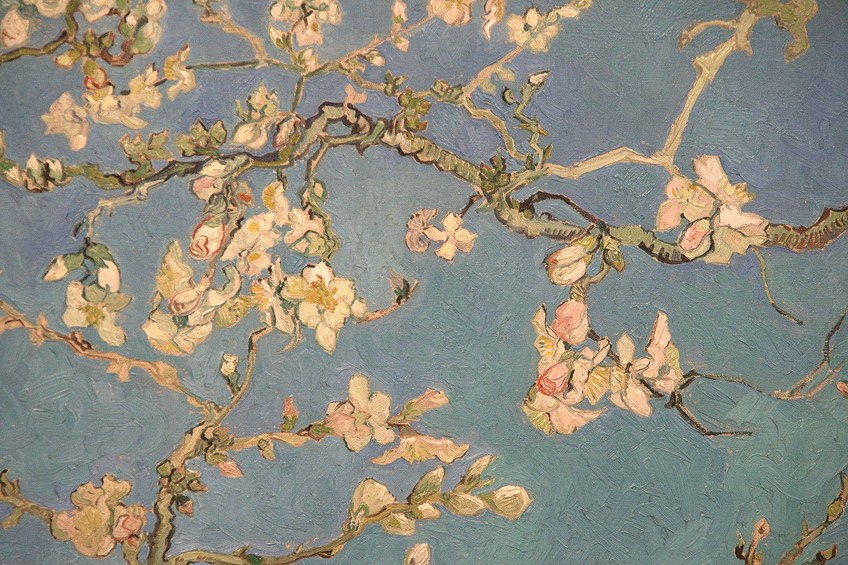
What is unique about the color palette is how van Gogh applied all the colors; upon closer examination, it is evident he layered colors, which, combined, created new shades of colors. This is of course not a new element of van Gogh’s painting style, and we will find his skillful and creative color combinations a primary part of what makes his artwork so impressive.
Additionally, if we look at the brushwork on the van Gogh Almond tree, he applied the paint thicker in some areas and thinner in others.
This is evident in some of the almond flowers and the tree branches. There appears to be a thicker application of paint near the bottom of the composition, thinning out as it reaches to the heavens, this gives a sense of three-dimensionality.
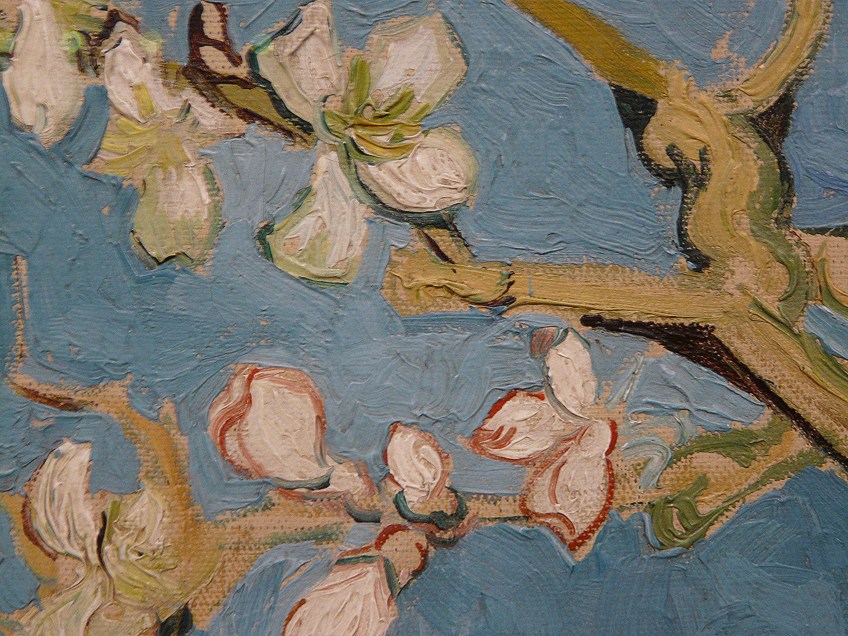
The brush lines appear like fluid semi-circular shapes along the tree branches, giving them a rounded shape, further enhancing a sense of three-dimensionality. It is also reminiscent of an element of painting in a free-flowing expressiveness, a characteristic of the Post-Impressionists, while simultaneously depicting a “real” object en plein air.
The blue background appears to be applied in short choppy strokes, possibly with the utilization of a palette knife. There is also a variation of blues applied, which gives the entire background a luster just like we see in so many of van Gogh’s sky-filled landscapes.
Although van Gogh’s overall use of colors seems to be muted in appearance, there is richness and liveliness in it.
Perspective
Some sources also question where the tree branch originates from, whether it is a cutting of a branch from van Gogh’s previous still lifes of branches in glasses, for example, Blossoming Almond Branch in a Glass (1888) and Blossoming Almond Branch in a Glass with a Book (1888).
Another consideration is that it is in fact a view of a branch attached to an Almond tree, however, it is almost as if it is from the vantage point of below the tree looking up at the branches.
Some sources have suggested, we, the viewers, can easily imagine ourselves laying on the ground gazing up through the tree branches, and in Almond Blossom Van Gogh has just taken a snapshot of part of the tree.
Bringing the Elements Together: The Importance of Japanese Prints
Van Gogh was a big fan and collector of Japanese prints, and this was in fact a large part of what inspired him to create Almond Blossom in the style of color, thick outlines, and perspective. The Japanese-inspired style, or as van Gogh referred to it, Japonaiserie, could be considered the glue that brings everything together in van Gogh’s blossom tree painting.

But first, for some context, the Japanese style was widespread in Europe during van Gogh’s time, specifically the 19th century. This was due to Japan’s trade with the West around the 1860s, which caused an influx of cultural and artistic goods and styles, of which the woodcut prints were significantly popular among artists, including Vincent van Gogh.
The ukiyo-e Japanese prints were very common sources of inspiration for van Gogh and were characterized by their large, solid, or “flat” areas of color, outlines appeared bolder and more pronounced, and objects or figures would be cut off at sections or edges of the painting.
The perspective would often be from a higher vantage point. Additionally, the perspective would be foreshortened and there would be a focus on the foreground or background giving a unique spatial awareness – sometimes the perspective would not be evident.
Furthermore, in Japanese prints the subject matter would range from everyday objects, landscapes, still lifes, and various scenes of people ranging from women, wrestlers, and ordinary folk going about their daily tasks.
The Japanese term ukiyo-e is tied to the history of Japan. It is widely translated to “pictures of the floating world”. It alludes to the transitory nature of life from the Buddhist meaning ukiyo, uki meaning “sadness”, and yo meaning “life”. It also refers to the fleeting nature of human pleasures, referring to the other word uki meaning “to float”. The latter was utilized during a time when the Japanese people experienced more freedoms, this was during the Edo Period around 1603 to 1867.
Van Gogh was reportedly inspired by several Japanese artists, notably Katsushika Hokusai and Utagawa Hiroshige. Van Gogh even produced copies of Hiroshige’s Plum Park in Kameido (1857) and Sudden Shower over Shin-Ōhashi bridge and Atake (1857). Van Gogh’s versions were called Flowering Plum Tree (1887) and The Bridge in the Rain (1887).
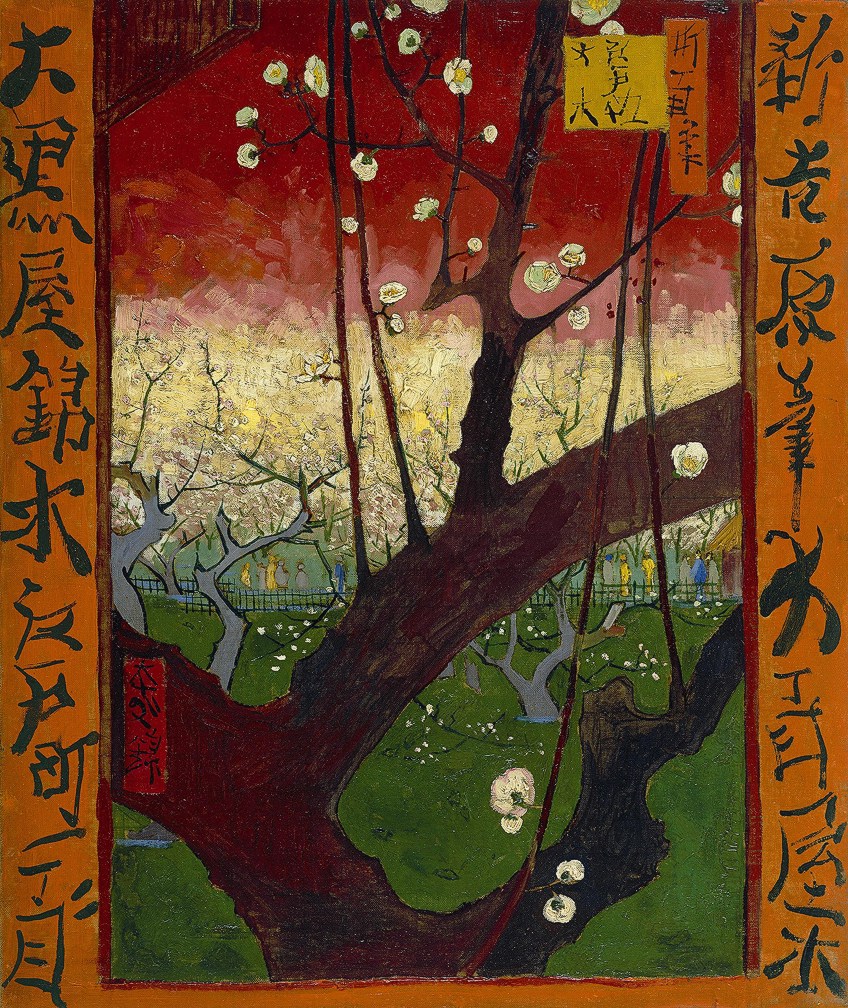
The Dutch artist also collected hundreds of Japanese prints and dealt with the art dealer Siegfried Bing who was one of the pioneers introducing Japanese prints in Europe. Van Gogh wrote extensively about his fascination with Japanese culture in his letter to his brother Theo. On one occasion he wrote, “Japanese art is something like the primitives, like the Greeks, like our old Dutchmen, Rembrandt, Potter, Hals, Vermeer, Ostade, Ruisdael. It doesn’t end” (Letter 642, 15 July 1888).
Van Gogh imagined Japan in an idyllic way, he was enamored with the style and the feelings it seemed to elicit, which was a lightness. This was in fact an inspiration for why he wanted to move further south from Paris, where he lived for a couple of years. In 1888 he moved to Arles, which is in the region Provence-Alpes-Côte-d’Azur in the south.
The south was a place where van Gogh could work with more light and color due to the climate, it was also reminiscent of Japan.
In Letter 620, 5 June 1888, van Gogh wrote about this to Theo, explaining: “About staying in the south, even if it’s more expensive – Look, we love Japanese painting, we’ve experienced its influence – all the Impressionists have that in common – and we wouldn’t go to Japan, in other words, to what is the equivalent of Japan, the south? So I believe that the future of the new art still lies in the south after all”.
We will notice a significant number of compositional elements from the Japanese prints style, especially when it comes to the famous van Gogh flower paintings. If we compare Almond Blossom to Hokusai’s Bullfinch and Weeping Cherry (c.1834) we will notice similarities straight away.
Some noticeable similarities that this van Gogh Almond tree painting shares with Japanese prints include, for example, the solid and flatter blue background, which makes up a large area of monochromatic color, the darker and more pronounced outlines on the Almond tree branches, the perspective, which we mentioned, appears to be from the bottom upwards.
There is an inevitable focus on the background too because of the richness of the blue color.
Other similarities to Japanese prints include the closeness of the subject matter, which is the Almond tree branches. Additionally, the tree branches are cut off along the edges of the painting, the left edge cuts off just part of the white flowers, the top edge cuts off the thinning branches, and similarly the right edge too.
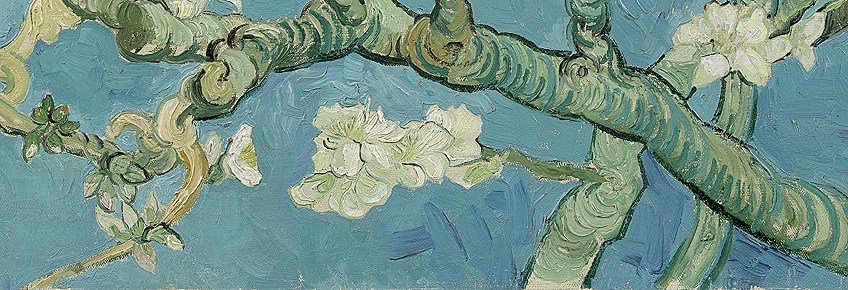
This “cropping”, as it is referred to, gives the composition a feeling of being more real, we cannot see where the tree ends or begins, it is almost like a transitory moment in time taken from van Gogh’s vantage point. The subject is also that of a natural shape we see every day, that of a tree, similar subjects we will find from Japanese prints.
It is unsure whether Hokusai’s Bullfinch and Weeping Cherry was a direct inspiration for van Gogh, but nonetheless, his awareness and admiration of hundreds of Japanese prints collectively influenced the way he painted, including Almond Blossom.
The Japanese style molded and shaped the van Gogh aesthetic that we see today.
Van Gogh Against a Blue Sky
Soon after van Gogh painted Almond Blossom, he experienced another mental breakdown and this left him in recovery for a lengthy period of time, which also left him unable to paint more almond flowers. In Letter 863, 29 April 1890, he wrote to Theo about this, saying:
“If I’d been able to continue working, you can judge from that that I would have done others of the trees in blossom. Now the trees in blossom are almost finished, really I have no luck.”
In this same letter above van Gogh mentioned to Theo about his desire to leave the asylum, he felt “sad and bored” and was not sure what to do anymore. Soon after, he moved to the village Auvers-Sur-Oise, which is just outside of Paris. This enabled him to be closer to his brother Theo as well as his doctor, Dr. Paul Gachet.
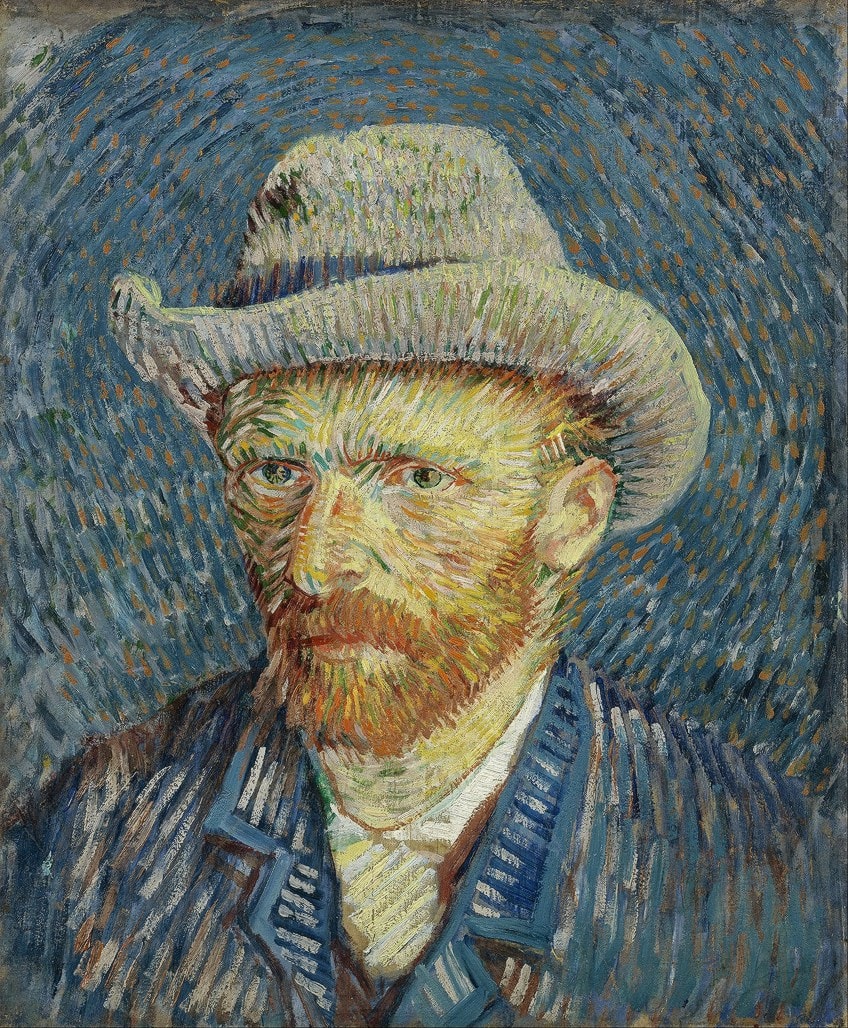
Almost two months after the above-mentioned letter, on 27 July 1890 van Gogh committed suicide by shooting himself in the chest. He became increasingly worried about his future and the financial support from his brother Theo, who was considering starting a new business venture.
In Letter 861 from 29 March 1890 Jo van Gogh-Bonger wrote to Vincent and explained that his new nephew, also Vincent, “always looks with very great interest at Uncle Vincent’s paintings, though – in particular the tree in blossom that hangs over our bed really fascinates him”.
This painting would continue to be a prized fascination. It remained within the van Gogh family and the entire art collection was taken over by the young Vincent van Gogh after his mother, Jo died. He started the Vincent Van Gogh Foundation, which led to the opening of the Van Gogh Museum in Amsterdam, where “Almond Blossom” is housed.
Take a look at our van Gogh Almond Blossom webstory here!
Frequently Asked Questions
Who Painted the Famous Almond Blossom (1890) Painting?
Almond Blossom (1890) is an oil on canvas painted by the Post-Impressionist artist Vincent van Gogh.
What is the Almond Blossom (1890) Meaning?
In Almond Blossom van Gogh depicted budding Almond tree blossoms against a blue sky. He created this painting to honor his newly born nephew with the same name, Vincent. The almond flowers bloomed at the beginning of Spring, which points to the Almond Blossom meaning being that of new life and rebirth. The concept of rebirth was also significant to van Gogh, and he celebrated it in his blossom tree painting alongside the celebration of his nephew’s birth.
Is Van Gogh’s Almond Blossom (1890) Part of a Series?
Vincent van Gogh painted numerous other paintings that were similar in subject matter to his Almond Blossom painting from 1890. This consisted of branches against a background, as well as branches in a vase or glass, some examples include Blossoming Almond Branch in a Glass (1888) and Blossoming Almond Branch in a Glass with a Book (1888), Almond Tree in Bloom (1888), Blossoming Pear Tree (1888), and Orchard in Blossom, Bordered by Cypresses (1888).
Isabella studied at the University of Cape Town in South Africa and graduated with a Bachelor of Arts majoring in English Literature & Language and Psychology. Throughout her undergraduate years, she took Art History as an additional subject and absolutely loved it. Building on from her art history knowledge that began in high school, art has always been a particular area of fascination for her. From learning about artworks previously unknown to her, or sharpening her existing understanding of specific works, the ability to continue learning within this interesting sphere excites her greatly.
Her focal points of interest in art history encompass profiling specific artists and art movements, as it is these areas where she is able to really dig deep into the rich narrative of the art world. Additionally, she particularly enjoys exploring the different artistic styles of the 20th century, as well as the important impact that female artists have had on the development of art history.
Learn more about Isabella Meyer and the Art in Context Team.
Cite this Article
Isabella, Meyer, “‘Almond Blossom’ van Gogh – Analyzing van Gogh’s Blossom Tree Painting.” Art in Context. October 28, 2021. URL: https://artincontext.org/almond-blossom-van-gogh/
Meyer, I. (2021, 28 October). ‘Almond Blossom’ van Gogh – Analyzing van Gogh’s Blossom Tree Painting. Art in Context. https://artincontext.org/almond-blossom-van-gogh/
Meyer, Isabella. “‘Almond Blossom’ van Gogh – Analyzing van Gogh’s Blossom Tree Painting.” Art in Context, October 28, 2021. https://artincontext.org/almond-blossom-van-gogh/.


